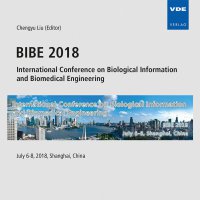Key fields and key technical points of pharmaceuticals: a perspective from patent analysis
Conference: BIBE 2018 - International Conference on Biological Information and Biomedical Engineering
06/06/2018 - 06/08/2018 at Shanghai, China
Proceedings: BIBE 2018
Pages: 13Language: englishTyp: PDF
Personal VDE Members are entitled to a 10% discount on this title
Authors:
Zhang, Ting; Chen, Juan; Ouyang, Zhaolian (Institute of Medical Information & Library, Chinese Academy of Medical Sciences and Peking Union Medical College Beijing, China)
Abstract:
Pharmaceuticals is a field largely promoted by technological innovation. This paper aims to identify and analyze the key fields and key technical points of pharmaceuticals from the perspective of patent analysis. Patents of pharmaceuticals applied from 2006 to 2012 were searched in the Thomson Innovation (TI) database. The Derwent Classification (DC) and the International Patent Classification (IPC) were analyzed, and quantitative analysis including patentometrics and regression analysis, combined with qualitative analysis by pharmaceutical experts, was applied to identify the key fields and key technical points of pharmaceuticals. Seven key fields including medicinal preparations of antineoplastic agents in “natural products”, antineoplastic agents in “heterocyclics”, medicinal preparations of antineoplastic agents in “heterocyclics”, medicinal preparations of steroids with heterocycle, infusion devices in “general”, antineoplastic agents in “other organics” and medicinal preparations of adrenal cortex drugs. Seeing from the distribution of these seven key fields, four were related to antineoplastic agents, and four were related to medicinal preparations, indicating that these two directions were the research hotspots in pharmaceuticals. And nineteen key technical points mainly related to active ingredients and medicinal preparations were identified, which additionally well reflected the research of “drug repositioning”. The results could provide policy makers useful guidance to optimize the configuration of resources at a macro level, and also help research institutions discover new technology opportunities to strengthen their technological innovation competitiveness.


